|
When is the last time you looked at the tag on your clothes to see where it came from? Many of us, in the hustle and bustle of life, probably have no idea where most of our clothes come from. We, at Ethical Fashion Academy, believe that knowing what is on our bodies is equally important as knowing what we consume into our bodies, especially if toxic, cancer causing chemicals are involved. Manufacture New York, a social entrepreneur company also shares this philosophy. Last month, we had the opportunity to attend MNY's Sustainable Textile Summit at the Loeb and Loeb building. It was a chilly, brisk afternoon in New York City, but inspiration warmed the room where artists, designers, teachers and fashion lovers alike shared their ideas and passion over cups of coffee and tea. Manufacture New York, started by Bob Bland and team, aims to support local designers while emphasizing the importance of eco-fashion from recycled garments. MNY is creating a sustainable fashion community right here in New York. During the summit, vital information was unearthed. For someone like me, who is neither a designer nor a business woman, I experience information overload. Guest speakers took a dive into pioneering ways of creating sustainable communities, empowered others to join the movement, and stimulated resourceful ideas on how to truly sustain an eco-system of slow, ethical fashion. Ethical Fashion Academy’s Francisca spoke on a panel with designers and while explaining the difficulty of running an eco-friendly business said, “It doesn’t take an expert, anyone can get involved and everyone can do their small part.” Other guest speakers on the panel moderated by Holly Henderson of Simply Natural were, the Head of Sourcing and Production at SUNO, Leanne Mai-ly Hilgart Founder of Vaute Couture. Cheryl Campbell Head of Eileen Fisher foundation and Green Eileen clothing recycling initiative, and Ross Gibson of Patagonia also contributed as panelists. You can only imagine all of the great tips and insights that were unleashed by seasoned fashionistas and industry experts with decades of experience and knowledge. After learning some of the most grotesque practices to mankind and deconstructing the beautiful realm of fashion in my mind, I have to admit, I was a little disenchanted by the glamour of all I once worshipped-let’s say- as far back as a young teenager buying my first teen Vogue magazine and well, hoarding as many graphic t-shirts as possible--just to keep up with my friends (I had an impressive collection). Many of the statistics and facts were shocking as additional guest speakers spilled their stories and passion for eco-fashion. Rhett Godfrey, representing organic cotton company Loomstate, would say that there is probably more cotton digested inside of your body than on the backs of those gorgeous models in the magazine, or perhaps that 85% of textiles ends in landfill. Having traveled to the end of the world to gain first-hand knowledge of organic cotton farming, my guess is this isn't just something he read out of a magazine. Sass Brown, author of ‘Refashioned’ and acting Assistant Dean for the School of Art and Design at the Fashion Institute of Technology, would tell you that thousands of people in Bangladesh were killed due to hazardous environmental facilities, and that communities in India are given permanent reminders of how toxins can eat away human skin. With her experience as an international activist, your guess would be right that these aren’t just characters in a book. This is real life. Not all companies should be put into this category, however. There are many brands making efforts to transition into more environmentally and socially conscious clothing, but we all have challenges that we face: money and time. Not sure where to start? You can begin by using some of the takeaways from the summit. Recycle your gently used clothes at your local donation center, research designers by using an app like 'Source Map' created by CEO, Leo Bonnani who built a system capable of tracking down your product even "down to the Chiquita banana farm" if you so wished. He says it keeps businesses "accountable and transparent." After the summit, the group moved to Manufacture New York’s studio on 36th street where everyone had the chance to get a hands-on experience with local designers and products. I learned how to spin fabric from Zaida of Balmaseda (so much easier than I imagined) . I also met designer Tabitha St Bernard-Jacobs of Tabii Just who showed us about zero-waste design. In all, the event was a success and as Francisca stated, everyone can make a small contribution. Designers were able to educate one another on best practices, employees of the fashion industry had a platform to discuss their challenges, and everyone was able to walk away with a piece of education that is much more valuable than any t-shirt or handbag, especially if they only last your average 2-3 year life cycle! Next time you go shopping during this busy Christmas time and you're looking for presents or the perfect New Years outfit, look at the tag, research, and think about it. Is it really worth what you're paying for? Can you mix and match your favorite crop top, or re-wear that classy little black dress? How about swapping a piece with your friend? Let's be honest, I can't afford a Stella McCartney shirt that has a life span of your grandmother's best kept winter coat. I am also guilty of this and yes, 'fast fashion' is an enormous beast. I have had to buy last minute dresses and only worn them once. Guilty. We're all in this together, to share ideas and information and empower each other to make more sustainable and ethical decisions. If we all take steps forward a trifle do our part then we can collectively improve the lives of animals, people and our planet. -Dominica Fashion Editor Ethical Fashion Academy The designers at Ricefield Collective push boundaries not only when it comes to their social enterprise model, but also in our passion for design. "We’re inspired by the landscape and the motifs of Ifugao, but are always striving for new interpretations and inspirations." Read our below interview with Meredith Ramirez Talusan, director of Ricefield Collective. What inspired your brand mission?
I was doing fieldwork among the indigenous people of Ifugao when I learned that many of them were abandoning their land because there were no jobs in their area. That was what inspired me to begin teaching them out to knit and reach out to knitwear designers and other friends to help form Ricefield Collective. What have been the greatest challenges? We're at a critical point in our growth as we transition from a Kickstarter project to a full-fledged company. There have been many challenges, but the biggest one probably is being able to reach as many people as possible because we don't have the kind of marketing and advertising budgets as big brands. What have been the greatest rewards? Being able to produce quality designs while helping people lead sustainable lives. There have been many individual stories about us helping our knitters but the one that has touched me most recently was that of Lina, who has five children and was seriously thinking of going to Hong Kong as a domestic worker so that she can send money to her family, even though the recruiters charge up to a year's salary to process her papers. Because of Ricefield, she is able to stay with her community and family, and that's something that makes us both proud and happy. What life experiences have shaped who you are? I grew up in the Philippines then moved to the United States at 15. I've been fortunate to receive the benefits of a university education after moving, and being able to use whatever skills I have for the benefit of others is extremely satisfying to me. Who do you admire and respect? So many people. RecentLy, I've been bowled over by two entrepreneurs. The first is Leila Janah from Samasource and the newly formed Sama Group, who uses lean startup methods to impact a large number of people. I've also been deeply impressed with Nathan Rothstein, the CEO of Project Repat, which recycles T-shirts into blankets. His transparency and candor as he discusses his business is so insightful and refreshing. Finally, there's Reese Fernandez-Ruiz of Rags2Riches, a company that works with craftspeople in the slums of Manila to make amazing handbags. What advise would you give aspiring Eco-Entrepreneurs of tomorrow? Strive to maintain your ideals, but prepare to compromise. For more information visit: http://ricefield.co RSVP HERE Long story short, the Ethical Fashion Academy has been asked to co-host a Slow Fashion Event this coming Friday May 3rd from 6-8:30 in Williamsburg, NY at one of NY's coolest Eco-Shops GGrippo. Of course I jumped on it "Yes"! No surprises there, as I think we all know by now what a sucker I am for this cause. I am super excited about this particular event because I love the "one world" theme of connecting slow fashion designers from Bein Spain, Ecoology and KAMELEONIK, with some of our local NYC eco-fashion superstars, Sass Brown, Titiana Inglis, Carmen Artigas, Jasmin Malik, Organic by John Patrick, and Rachel Kibbe. We'll be discussing these topics and more: What is Slow Fashion, and what inspires you about the movement. Advice for aspiring slow fashion designers. What is happening in the local and international Slow Fashion movement, is it growing , why? How can we continue to grow and educate the community? What is the future of slow fashion? Our NYC panelists need no introduction, but here is a little about each: Sass Brown is Acting Assistant Dean for the School of Art and Design at the Fashion Institute of Technology, New York, and formally the Resident Director for FIT’s study abroad program in Florence, Italy. Originally from London, England, Sass established herself as a designer with her own signature collection selling in the UK and across Canada. As a researcher, writer and blogger, her area of expertise is eco fashion, in all of its different expressions, from slow design and heritage craft skills to recycle, reuse and new business models. She has published papers, spoken and taught workshops around the world on the topic of sustainable design. She has worked and volunteered in women’s cooperatives and educational institutions in Brazil, Peru, Columbia, Sri Lanka, Italy, France, US, Canada and the UK. Her book, Eco Fashion, published by Laurence King, has been translated into Italian as well as Spanish, and showcases some of the best expressions of eco fashion from around the world. Her passion is communicating and promoting the best in eco fashion design, which she does through a multitude of media, most notably her book; Eco Fashion, her website www.ecofashiontalk.com and her journalism. Titania Inglis's womenswear line embodies her philosophy of lush minimalism in both its aesthetic and its core principles. Each collection is draped by the designer in her Brooklyn studio and sewn in limited quantities in small New York factories, and explores the potential of hand techniques and thoughtfully sourced materials to express a modern aesthetic. Titania launched her line in 2009 and was honored with the 2012 Ecco Domani Fashion Foundation award in sustainable design. www.titaniainglis.com Carmen Artigas Dean of Ethical Fashion at the Centre for Social Innovation Carmen has worked in fashion for nearly 20 years, most recently in sustainable design, consulting, and sourcing. Working in India in 1999 with artisan communities reviving endangered crafts and later developing a yoga line using certified organic cotton and natural dyes exposed her to the challenges of developing sustainable products. She currently teaches Ethical Fashion at the Fashion Institute of Technology and Parsons New School of Design in New York, and she dedicates her time to reevaluating the human and environmental cost of products, advocating for craftsmanship, and redefining “made-in” and “made-by”. about.me/carmenartigas A 15-year veteran of the publishing industry, Jasmin Malik Chua is the managing editor of Ecouterre.com, the leading website on sustainability and innovation in fashion. She has an M.S. in biomedical journalism from New York University, where she was a founding fellow of the literary reportage program, and a B.S. in animal biology from the National University of Singapore. In addition to stories published in online and print publications like Alive, Inhabitat,Plenty, The Huffington Post, and Sprig, Chua has been quoted as a green expert by such publications and outlets as The New York Times, BBC Radio, BusinessWeek, Newsweek, and People. www.ecouterre.com Rachel Kibbe is founder of HELPSY, on online boutique and editorial site for high-end ethical fashion. Recently launched, HELPSY intends to serve as a platform for change in the fashion industry— offering cool, high-end, designer fashion that is also ethically made. She believes a more ethical fashion industry can come without sacrifice to visual appeal. Originally from Cleveland, Ohio Rachel is now based in Greenpoint, Brooklyn. She has a degree in Fashion Design from Parsons and a B.A. in Creative writing and Spanish from Emory University. During her time at Parsons she apprenticed under labels such as Alexander Wang and Jack Spade. Before founding HELPSY, Rachel’s interest in fashion came to fully bloom when she lived in Spain for three years and wrote for a magazine about health and fashion. After moving to New York to attend Parsons, model Agyness Deyn brought Rachel on to write about fashion for her website, NAAG. She later took the role of Contributing Editor to the Byrne notice. The HELPSY online boutique was just launched in March and has been featured in Daily Candy, Peppermint Mag, and FashInvest. www.shopHELPSY.com Organic by John Patrick leads by example, out of necessity. From its first envisioned moments as a brand, there were simply no others like it. With an international reach and influence, John Patrick's award-winning design and reigning focus on ethical production has long-garnered the respect and eye of both consumers and companies alike, with a genuine commitment to stand-out quality and forward-thinking style. As a recognized member of the CDFA, the mindfulness and accomplishments of Organic by John Patrick has pioneered a global mission for implementing change in an industry that still has a long way to go. With an authenticity and sincerity from its origin, Organic by John Patrick continues to be an authority in the sustainable fashion movement. Through Organic, John Patrick has begun to ignite an awakened social awareness, as well as inspire creative thought and mindfulness in others. www.organicbyjohnpatrick.com Ecoology’s collections are made for fashion loving sensitive women who know who they are and how they fit in this world. We want to feel good and feminine and this is the message we transmit in our designs. We like to wear clothes that are different, which is why we decided to make very few garments of each model. Both the fabric and the exclusiveness will make you feel you are wearing something very special. Ecoology is green, digital and design. We focus on selective distribution and online media for our sales and to publicize our business worldwide. We produce in Barcelona, so we control what we do and encourage textile work in our area. Organic fabrics are more expensive but do not want to pay more for it, just want you to enjoy more quality at the best price. KAMELEONIK Espadrilles designed in the Basque Country handmade in Spain. Aimed at a clientele with a style and personality all their own,Kameleonik blends quality, tradition, sustainability, innovation, and elegance into their creations. Four are the cardinal points on which it turns the philosophy of our brand: sustainability, quality, innovation and elegance. Sustainability understood as respect by the social and environmental aspects that always they must guide to the companies with conscience. For more information about the Be in Fashion Spain brands click here.  Francisca Pineda is the founder of the Ethical Fashion Academy, a community focused initiative that organizes eco-fashion events in New York City and a yearly hands-on Eco-Fashion Workshop in Costa Rica. She is the creative director for BHAVA, a luxury artisan-made cruelty-free footwear collection: conscious & cool with a dose of ingénue charm. Francisca is passionate about sharing what she has learned throughout her 15 year career designing apparel and accessories with the next generation of designers and teaches design through the Fashion Portfolio Academy, an online design education platform.  I recently had the pleasure of meeting Natalie Mundy who introduced me to the beautiful hand spun silk scarves made by Federation SAHALANDY. Located in a tiny mountain town in Madagascar, Sandrandahy, is made up of 7 silk/cotton weaving co-operatives and associations. Natalie first started working with Sahalandy through a volunteer project with the UN. However when her official duties in Madagascar were complete, her life had changed and although back in the US she has continued her work helping to spread the word about this amazing project of hope and empowerment. Each scarf is made of naturally dyed, hand-spun raw silk. The natural colors are subtle and sophisticated, and the unique weavings make each piece true one of a kind luxury. Meet Natalie and experience the beauty of the Sahalandy collection this holiday season at the Columbus Circle Holiday Market from Nov.28-Dec.24, daily from 10-8 pm. If you're interested in learning more about Sahalandy or volunteering with Natalie, contact [email protected] www.sahalandy.org 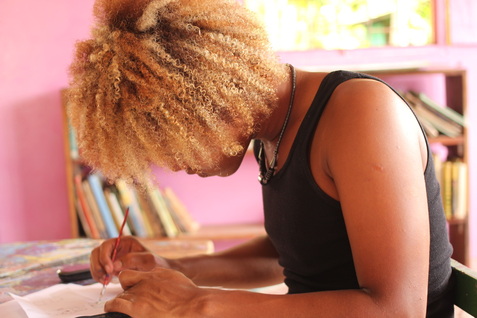 Future designer in Puerto Viejo's public school perfects his sketching skills. It's Thanksgiving day, probably my favorite holiday, not just because I love pumpkin pie but because it's a time to remember everything we are grateful for. There is such contagious joy in those who emanate gratitude, just think how good you felt last time someone thanked you, and how small that favor felt in return for that beaming smile. Today I can't help but recall one of my favorite moments in our recent trip to Costa Rica. The caribbean side of Costa Rica is known for the most beautiful beaches and exotic flora and fauna, however, its public schools are neglected. I learned this when I met Eva Percich, an Italian artist who lives in Puerto Viejo and has single handedly made it her mission to provide an art curriculum in the local school. Can you image no art class in elementary school? Within a few years Eva has achieved her goal and the little school now has a small art classroom. The local kids enjoy it so much that even on a school holiday they still show up and Eva is there to open the door and hold an unofficial session. I met Eva earlier this year and she had asked me if I would give the students a fashion design class just for fun. When I returned in October for our workshop I followed up with Eva and we spent an amazing day introducing a small group of students to the fashion design process. I explained that a designer's first step is to find their inspiration, develop a mood board and decide their color palette. From there each student was to design a garment or accessory. This was a group of ages from 10-16 but all enjoyed the day. Eva has been working to help the students develop their talents and I have also posted some photos of their paintings. She told me that many had offered to volunteer to teach a class there but that I was the first who truly followed up. In all truth, with the workshop and all the traveling, I too was close to canceling, we can all think of million reasons to postone a plan with a friend, but I am so glad I didn't. Visiting the school was such an eye opening experience for me. I had never thought that such a beautiful place with visitors from all over the world does not trickle down any of its wealth to its public schools. We don't need to wait for a tragedy to make a difference, chances are if you look around there is someone who would love a little care and recognition, wether a 5 or 75 year old, you'd be surprised how effective a simple gesture can be. Scroll down to enjoy photos of that day and some paintings by the young artists. 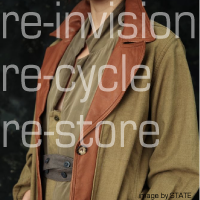 We are pleased to announce our next Ethical Fashion Academy event Thursday, Nov. 29 from 6:30-8:30 at GGrippo art+design 174 Grand St, Brooklyn, New York. After party from 9-11 at Le Comptoir 251 Grand Street, Brooklyn. RSVP on facebook or [email protected] Scroll below for info on our talented panelists, and click on images for larger view! Join this inspirational discussion with ten talented New York based designers who incorporate re-cycled or up-cycled materials in their designs. Once again, the space is provided by GGrippo art+design 174 Grand St, Brooklyn, New York. Last time it was hard to stop the conversation, so this time we've reserved an "after-party" lounge 2 blocks down from the event at French lounge Le Comptoir, with music by nu-disco DJ Dezy.  Natalie Frigo is passionate about promoting ethical jewelry design on a local and global scale. Every step of the design process, from inception to finishing, occurs in New York City. All of her pieces marry 100% recycled metals, mainly sterling silver and 18K gold, with personally selected, conflict-free gemstones. By implementing these approaches with her creations, Natalie helps to lead the wave creating a new paradigm in jewelry design. Natalie uses the ancient practices of metalsmithing and 'cire perdue' (also known as lost-wax casting), sculpting all of her designs by hand. Her inspiration ranges from early metallurgy and textile design to recent architectural developments, culminating in a collection that is contemporary, but by referencing venerable artifacts, also feels timeless. Natalie has been featured in September's Vogue as well as Allure, Lucky, and Marie Claire. She lives and creates on the Lower East Side of Manhattan. http://bynataliefrigo.com/  Bao-Khang Luu works exclusively with commonly discarded materials to create fashion, art, and design-inspired home accessories. He officially launched Relevé Design in 2011, unveiling his inaugural collection of upcycled lighting and an expanded blog, which documents his unique perspective on craft and DIY. Since then his work has been featured in Extreme Makeover: Home Edition, Apartment Therapy, The Huffington Post, Surface Asia, Inhabitat, and Krrb. He and his designs have also appeared on The Nate Berkus Show and HGTV’s Flea Market Flip. Bao-Khang graduated with a BFA in Design from The University of Texas at Austin and an MFA in Design and Technology from Parsons. www.relevedesign.com 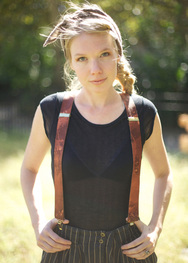 Adrienne Antonson is the designer behind STATE, a sustainable clothing label that utilizes repurposed, domestic, and natural materials. While living and working on an alpaca farm, Antonson launched STATE, and the label is a reflection of the beauty and resourcefulness of rural living. STATE's products are made in limited quantities using thoughtful methods from Antonson's Brooklyn studio. http://www.shop-state.com/ http://adrienneantonson.com/sculpture/  HIMANE SUSTAINABLE DESIGNS is an independent sewing and design studio founded by Catherine Edouard Charlot and based in NYC. The company injects a heavy dose of style, precision tailoring, and visual interest into its upcycled garb. HIMANE has been and is continuing to exceeding peoples’ expectations of what recycled fashion can be. Shop Online- http://himane.bigcartel.com/ Site- http://www.himane.com
 Tamara Leacock is a fashion artist and ethical fashion writer who uses recycled clothing donations and repurposed objects to create wearable fashion statements. Through her work, she works to engage others in the myriad of ways in which fashion can be used to facilitate empowerment and social change. www.reciclagemny.com  Madeline Jacobs studied painting and jewelry at Rhode Island School of Design. After moving to New York she took a job in the corporate world, and has now left that behind to develop her knitwear and jewelry line, MADELINE and to write a DIY column for TeenVogue.com.  Sara Mennona is a marketing program manager, jewelry designer and vintage enthusiast. She is interested in traditional artisanal crafts, as well as new developments in sustainable design. In 2010 she earned a sustainable design certificate from the Fashion Institute of Technology. http://saralies.com/  Bambi Orban is a fashion industry professional with extensive experience in all product categories. Her childhood was populated with women who had strong interests and high talent levels in textile arts and crafts. In adulthood this translated into gravitating towards a career in fashion design, which has given her a wide range of exposure to fabrics and techniques that find their way into many of her personal projects.  DJ Dezy Special thanks to Dj Dezy who will be spinning Old Boogie and Nu Disco at the after party at Le Comptoir. KACHAMA- EXTRAORDINARY TEXTILE ARTIST visits NYC with her stunning hand weaving art from Thailand.9/4/2012  I recently had the honor of meeting textile artist extraordinaire Kachama. She shared her beautiful textiles with us at our recent Conscious Collaborations event. I then had the privilege of meeting her again the next evening at an open house hosted by Jeanne Golly. Kachama was kind enough to answer some questions and allow me to photograph some of her pieces. For decades Kachama has been using hand woven and natural dye techniques in her studio in the Chang Mai region of northern Thailand. The first time she went to the mountains to learn these ancient techniques almost every home had a loom and often the grandmother was the weaver. Since then the number of weavers has dwindled and those using natural dyes are even more rare. What are we losing? More than those of us who live a modern life can even begin to comprehend. Natural dyes are not just about gorgeous colors, but serve us with their medicinal properties as well. By studying with the tribes she learned so many of the subtleties like why it is best to dye indigo at night. She also spoke of a woman who healed her son's skin ailments by dyeing his clothes in natural tree bark dyes to protect his skin. As each generation loses interest in this history who knows what knowledge is lost. It has taken hundreds of years to pass down this information and the temptation to work in the city, often to sew at a fast fashion factory, is too great to stay behind with grandmother and weave. Conservation of cultural heritage is key in Kachama's mission. By re-weaving traditional hilltribe tapestries, both antiques and contemporary, inside her own creations Kachama hopes to preserve and promote the cultural legacy of Thailand’s mountain people. In her Reuse/Recycle/Replenish series exhibited in Tokyo, Kachama explores our everyday waste and manages the impossible by incorporating our modern day garbage into her work, creating a devastatingly beautiful landscape. Thank you Kachama, my conversation with you was inspirational and your work is exceptional. I have uploaded several photographs in full size so you can take your time to explore her work. Each piece takes months to complete, and is unique unto itself. Enjoy. For more information visit www.kachama.com |
Archives
November 2014
join us! Categories
All
|

























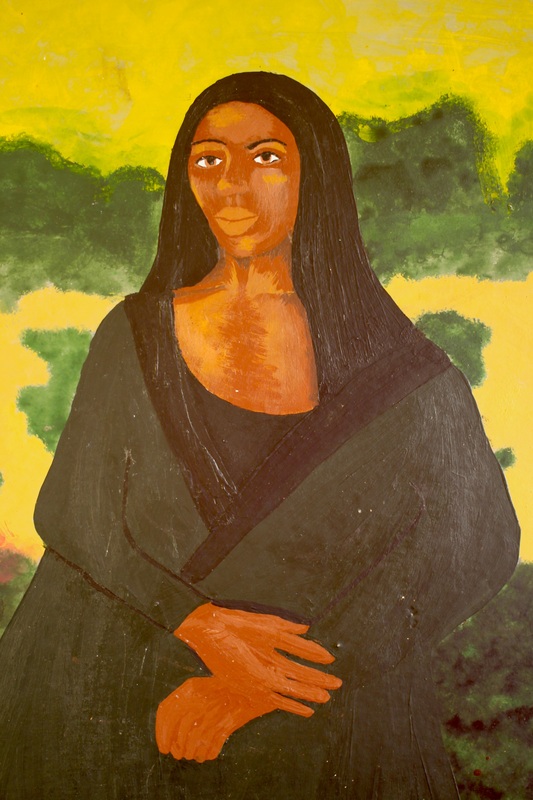






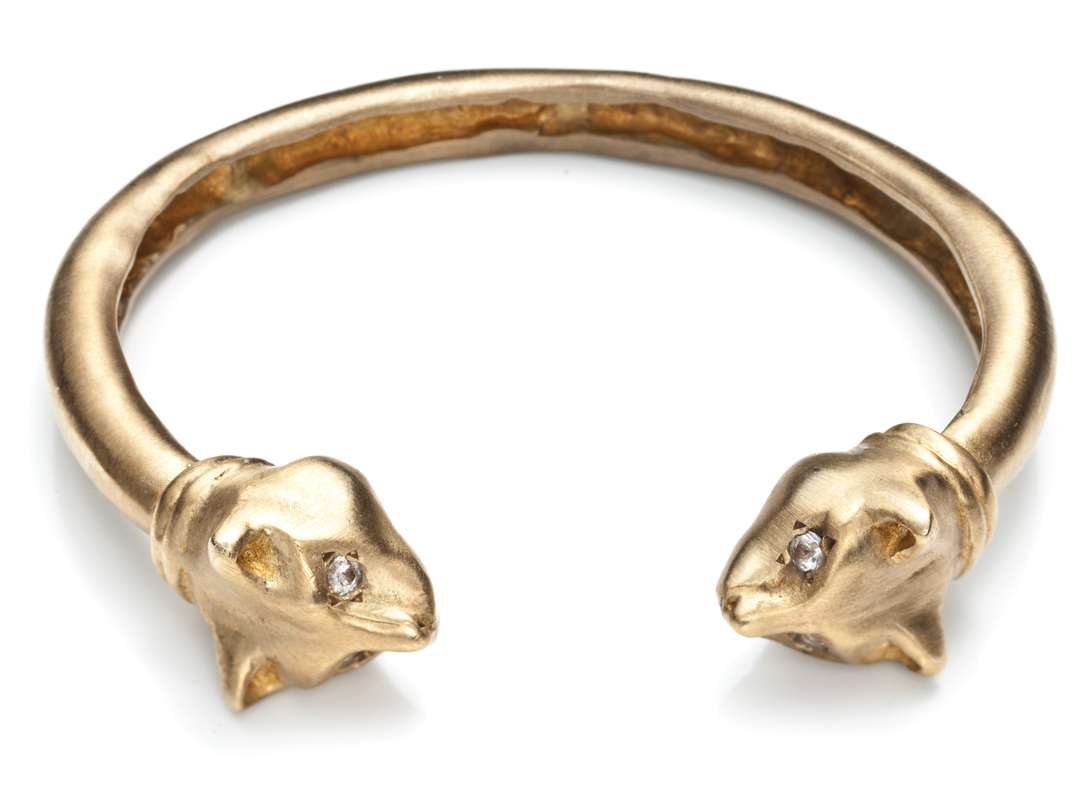












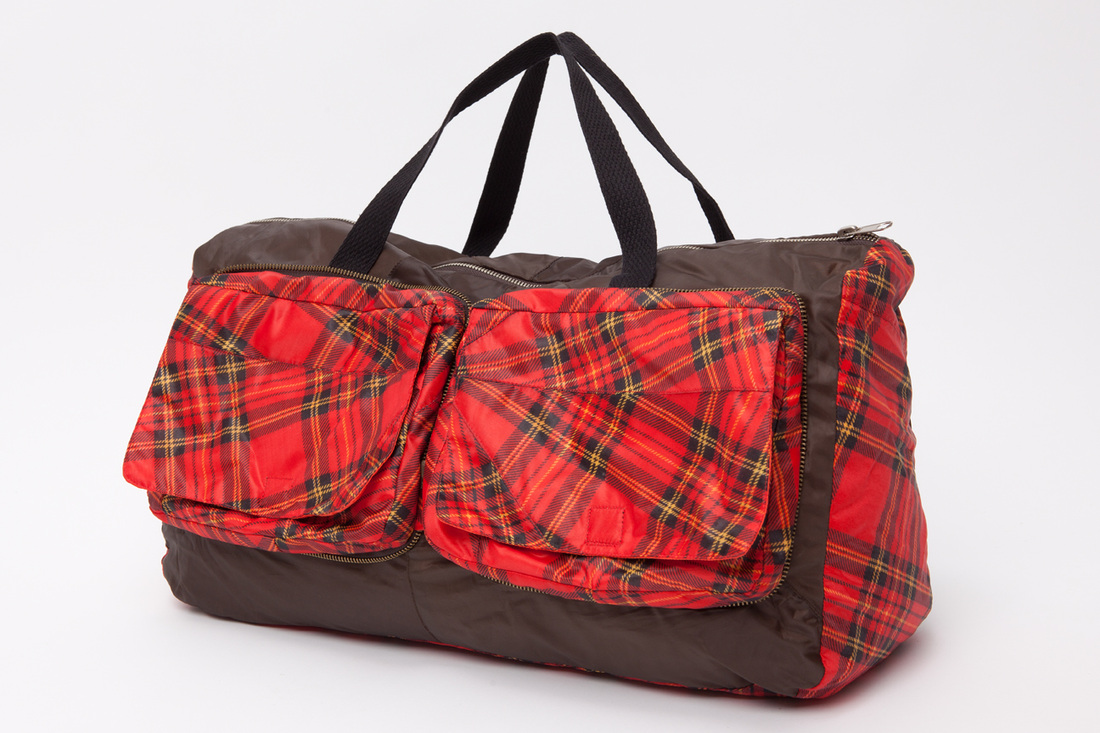
























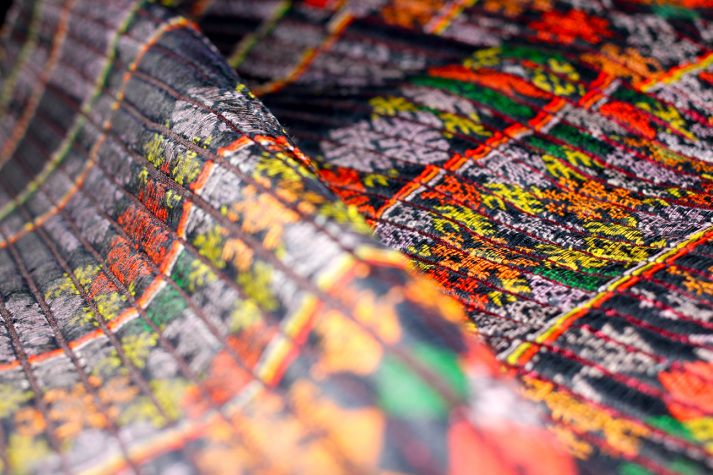





 RSS Feed
RSS Feed
